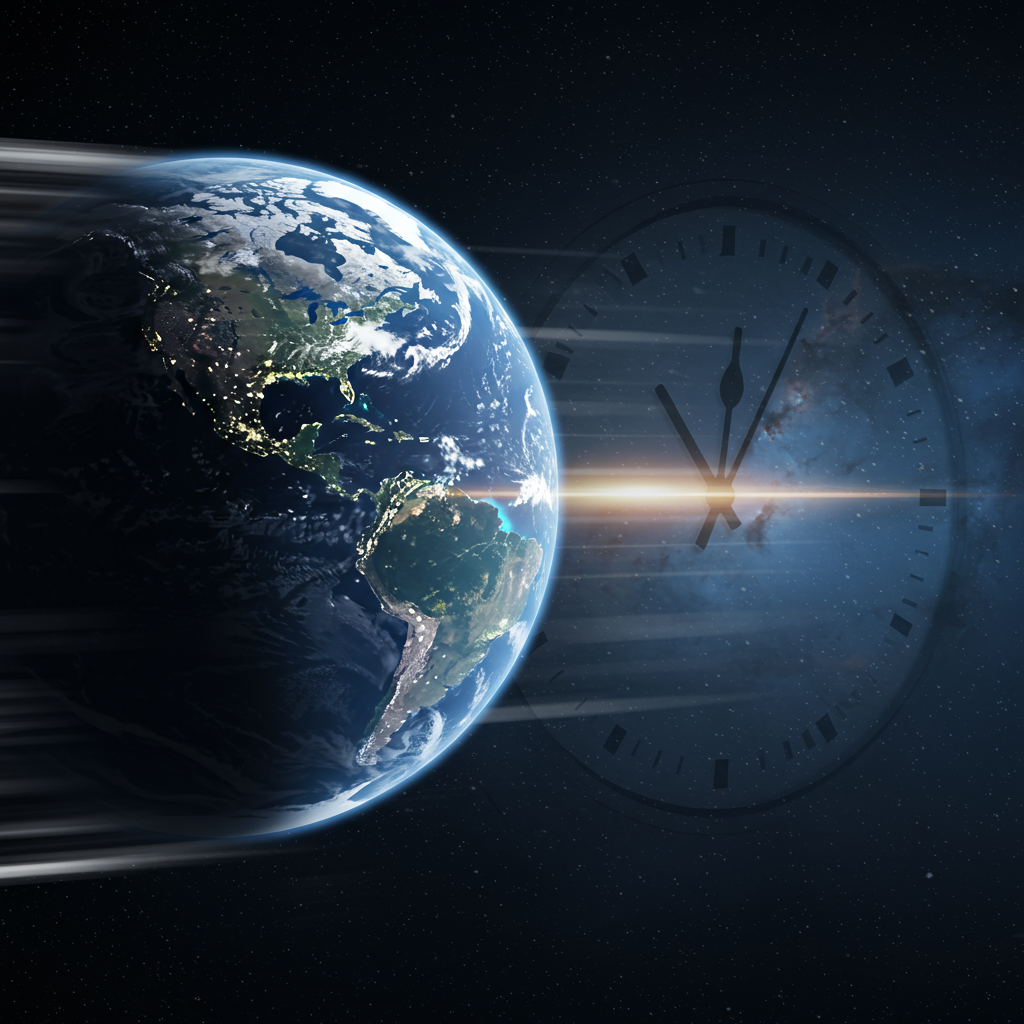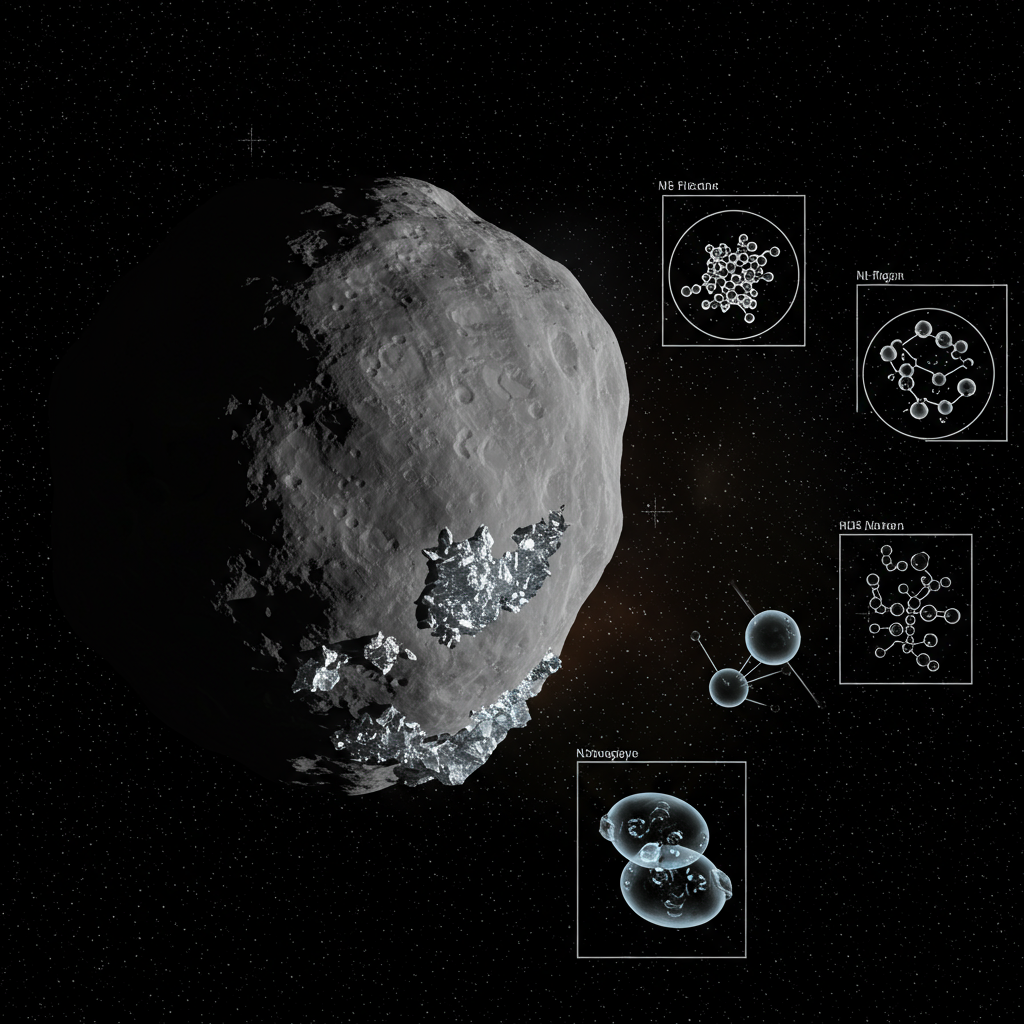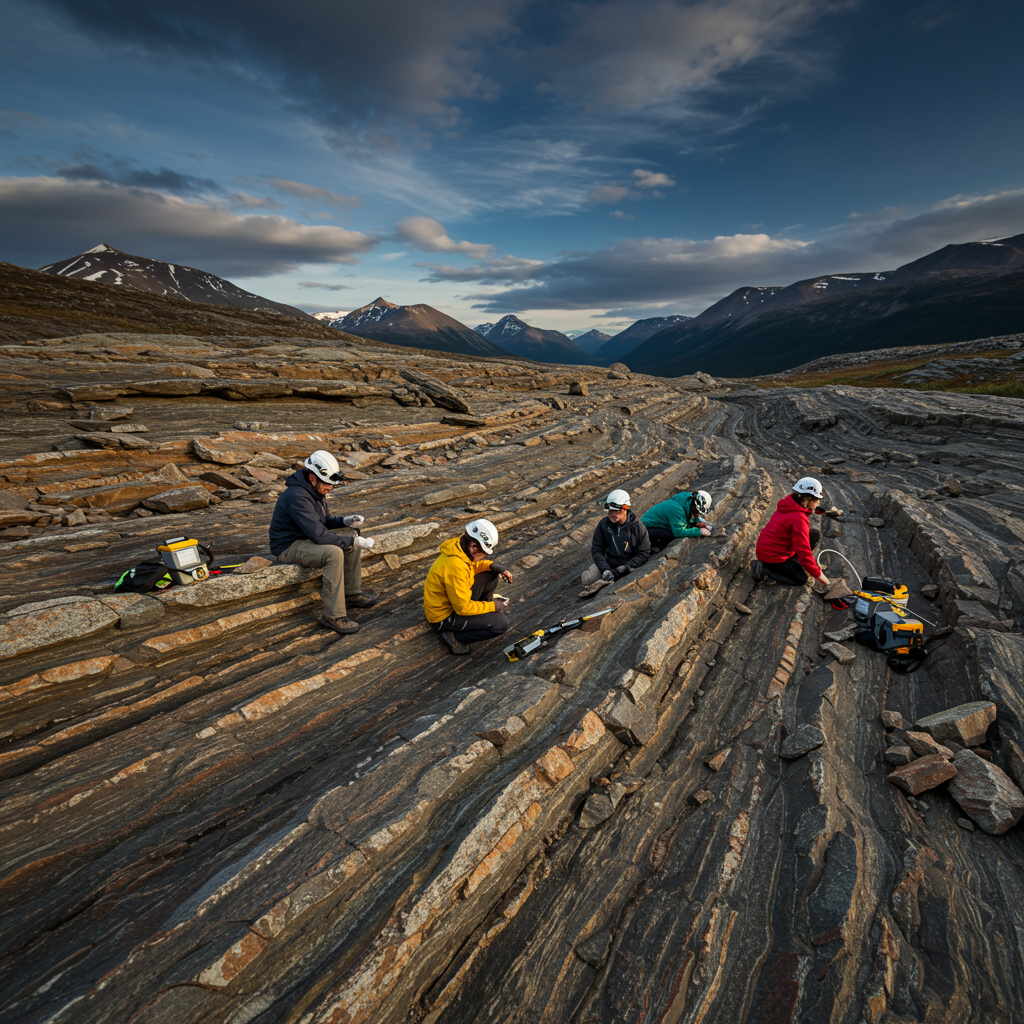Are days getting shorter? It might sound like science fiction, but earth’s spin appears to be accelerating, a phenomenon that could lead to the shortest days we’ve experienced in decades. Scientists are observing this unusual trend with intrigue, as it runs counter to long-standing expectations about our planet’s rotation. This subtle but significant shift has implications not only for physics but also for the precise timekeeping systems that underpin modern technology.
Recent data suggests Earth’s rotation speed has been picking up since around 2020. This acceleration means a day, which is the time it takes for Earth to complete one full rotation on its axis, is lasting slightly less than the standard 24 hours (or 86,400 seconds). While these changes are incredibly small – measured in milliseconds – they are significant enough to be detected by highly sensitive instruments like atomic clocks and require attention from global timekeeping authorities.
According to reports and scientific observations, this acceleration is expected to continue, potentially making some days in the near future the briefest since record-keeping began in 1973. Specific dates anticipated as potentially record-short include July 9, July 22, and August 5. For instance, August 5 is predicted to be about 1.51 milliseconds shorter than the average day length.
The Historical Context of Earth’s Spin
Earth’s rotation isn’t perfectly constant. It’s influenced by a complex interplay of forces, causing slight variations in the length of a day over different timescales. Over billions of years, tidal friction exerted by the Moon has gradually slowed Earth’s spin, making days progressively longer. Billions of years ago, a day was significantly shorter than 24 hours.
However, other factors introduce shorter-term fluctuations. Events like large earthquakes, volcanic eruptions, and changes in atmospheric pressure or ocean currents can cause minor shifts in the planet’s rotation. Even the slow rebound of landmasses after the last Ice Age (post-glacial rebound) slightly affects how mass is distributed, influencing rotation.
What makes the recent acceleration notable is its sustained nature since 2020. For decades prior, the long-term trend was a gradual slowing, requiring the occasional addition of a “leap second” to Coordinated Universal Time (UTC) to keep it aligned with Earth’s rotational time (UT1). This unexpected speed-up defies the expected pattern.
What’s Causing Earth to Spin Faster?
The precise reason for the current acceleration trend is still a puzzle for the scientific community. While multiple factors influence Earth’s rotation, scientists suspect the primary driver of this recent speed-up might lie deep within the planet.
One leading theory points to processes occurring within Earth’s molten core. Scientists believe that changes in the movement of material in the core could be impacting the overall rotation of the planet’s surface. This internal dynamic is thought to be a significant factor that current models of oceanic and atmospheric changes don’t fully explain.
Other potential contributing factors are also being investigated. The redistribution of mass on Earth’s surface, such as that caused by melting glaciers and large ice sheets shifting water towards the equator, can influence spin (conservation of angular momentum dictates that moving mass away from the axis of rotation slows the spin, like a figure skater extending their arms). Climate phenomena like El Niño and La Niña are also mentioned as possible influences. Additionally, slight wobbles in Earth’s axis, known as the Chandler wobble, and variations in ocean currents could play a role in these rotational changes.
Interestingly, research also suggests that human-caused climate change, specifically the accelerated melting of polar ice, is actually having a slowing effect on Earth’s rotation. Studies indicate that this mass redistribution is powerful enough to measurable counteract some of the speeding-up forces. This makes the observed net acceleration since 2020 even more surprising to experts, implying the speeding force (likely from the core) is currently dominant.
Experts Express Surprise
The scientific community has openly expressed surprise at this turn of events. Judah Levine, a physicist from the National Institute of Standards and Technology, noted as far back as 2021 that the lack of need for previously anticipated leap seconds was unexpected. He stated that the assumption had been Earth would continue to slow down, requiring more leap seconds.
Leonid Zotov, a senior researcher at Moscow State University and co-author of studies on the topic, echoed this sentiment, telling timeanddate.com that “Nobody expected this.” He added that the cause of this specific acceleration is not fully explained and that most scientists believe the origin is internal to the Earth, as existing climate models don’t account for its magnitude.
The Impact on Timekeeping
While a few milliseconds might seem negligible in everyday life, the acceleration of Earth’s rotation poses a significant challenge for global timekeeping. Our modern world relies on incredibly precise synchronization, particularly for critical infrastructure like GPS navigation, satellite systems, financial networks, and telecommunications.
Global timekeeping uses Coordinated Universal Time (UTC), which is based on highly stable atomic clocks (International Atomic Time – TAI). For UTC to remain useful for daily life and navigation, it needs to stay closely aligned with Earth’s actual rotation time (UT1). Traditionally, when Earth’s rotation slowed slightly relative to atomic time, a leap second was added to UTC to keep it within 0.9 seconds of UT1. 27 such positive leap seconds have been added since 1972.
However, with Earth now speeding up, this practice is becoming obsolete. The International Earth Rotation and Reference Systems Service (IERS), responsible for monitoring Earth’s rotation and announcing leap seconds, confirmed recently that no positive leap second would be added.
The current acceleration trend raises the unprecedented possibility of needing to subtract a second from UTC – a “negative leap second.” Some calculations have projected this could be necessary as early as 2026 or 2029. Implementing a negative leap second presents significant technical hurdles, as many digital systems are not designed to handle such a backward time adjustment. This potential disruption has led to international discussions about reforming or even eliminating the practice of leap seconds altogether by 2035, aiming for a more stable time scale adjusted by less disruptive means over longer periods.
Despite the potential need for future adjustments to global time, the acceleration is far too small to be noticed by individuals. Your daily schedule, electronic devices, or the duration of sunlight you experience will not be measurably affected by this millisecond change. The impact is primarily on the highly precise, invisible infrastructure that powers our interconnected world.
Frequently Asked Questions
Why is Earth’s rotation speeding up despite factors slowing it down?
Earth’s rotation is influenced by multiple forces acting over different timescales. While factors like tidal friction from the Moon and recent climate change-induced ice melt tend to slow Earth’s spin, other forces can cause it to speed up. Scientists are currently surprised because a sustained acceleration trend has been observed since around 2020, overriding the expected slowing effects. The leading scientific theory suggests this acceleration is primarily driven by dynamic processes occurring within Earth’s molten core, which are not yet fully understood but appear strong enough to dominate other factors for now.
How does Earth’s rotation speed affect global timekeeping and what are “leap seconds”?
Global timekeeping uses Coordinated Universal Time (UTC), which is based on incredibly precise atomic clocks. However, daily life is tied to Earth’s rotation relative to the sun. To keep UTC aligned with the slightly variable speed of Earth’s rotation (known as UT1), “leap seconds” are occasionally added to UTC. Historically, Earth’s rotation was slowing, so positive leap seconds were added to allow atomic clocks to catch up. The current acceleration means Earth’s rotation is getting ahead of atomic time, potentially requiring the unprecedented subtraction of a “negative leap second” to maintain alignment, a move that presents significant technical challenges for modern digital infrastructure.
What are the practical impacts of Earth’s rotation speeding up on everyday life?
The practical impact of Earth’s rotation speeding up by milliseconds is essentially imperceptible in everyday life. Humans will not notice days being shorter, and it doesn’t affect phenomena like sunrise or sunset times in a noticeable way. The primary implications are for highly technical systems that require extreme precision, such as satellite navigation (like GPS), global communication networks, and financial trading platforms. These systems rely on synchronization with global time standards, which must account for even minuscule changes in Earth’s spin.
Conclusion
The predicted shorter days in July and August, potentially setting new records for the shortest days in decades, are a fascinating consequence of Earth’s currently accelerating rotation. While the precise cause remains a subject of ongoing scientific investigation, likely tied to processes within the planet’s core, this trend presents a unique challenge to global timekeeping. The debate around implementing a negative leap second highlights the delicate balance required to synchronize atomic time with our planet’s dynamic natural rhythm. Though imperceptible to us day-to-day, this phenomenon underscores the complex forces constantly at play within and around our planet, reminding us that even the seemingly fixed length of a day is subject to subtle, continuous change.
Word Count Check: 1056




